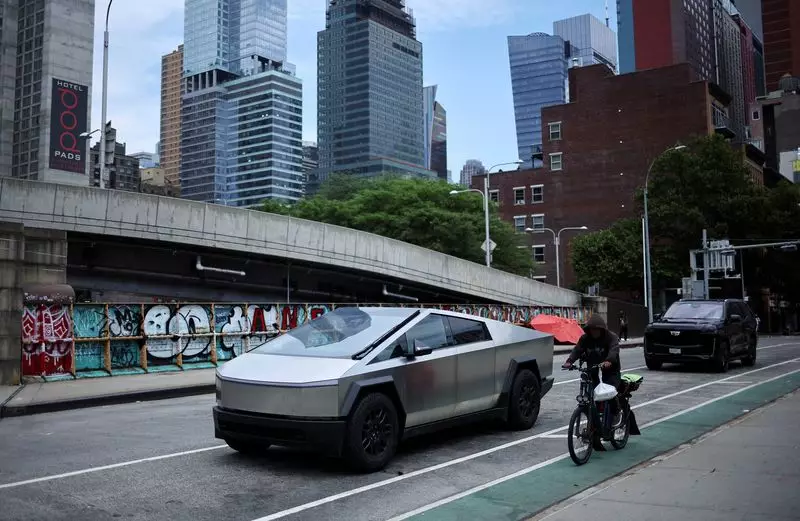Tesla’s latest reported delivery figures reveal a stark contrast to the company’s soaring ambitions. While the industry witnessed price cuts in the fourth quarter, the much-anticipated Cybertruck saw only around 15,000 units delivered, resulting in an estimated annual total of 35,000 to 40,000 units. This reality highlights a significant departure from Tesla’s initial claims of an impressive 2 million orders for the vehicle. The underwhelming performance of the Cybertruck has left analysts at Bernstein questioning the product’s viability, suggesting it may be perceivably positioned as a failure within Tesla’s portfolio.
Analysts pointed out that the Cybertruck might not achieve positive gross margins and raised concerns about its future given the pitfalls of profitability and a potential oversaturation in a niche market. With its lengthy four-year development period, questions arise about the considerable strategic decisions made by Tesla. Critics posit that this focus has diverted essential resources and attention away from more competitively priced vehicles that the market currently demands, an offering that Tesla appears to be increasingly in need of as it defends its market position.
Tesla’s declining auto gross margins present a troubling backdrop against which these developments are taking place. Bernstein analysts have forecasted that, operating without the lifeline of regulatory credits and occasional software recognition, long-term margins could dip below 15%. This decline would place Tesla at a disadvantage compared to numerous traditional internal combustion vehicle manufacturers, creating concern over its competitiveness in a rapidly evolving market.
Moreover, forecasts of Tesla’s annual earnings signal a potential drop from $2.60 in 2023 to around $2.10 in 2024, indicating significant challenges ahead. Even factoring in an estimated $1 billion in regulatory credits, the financial outlook remains precarious, thus fueling discussions about the company’s broader strategies and how it positions itself relative to newer entrants and established automakers alike.
Beyond the Cybertruck, analysts are also scrutinizing Tesla’s headway in the robotaxi sector, where expectations have been set high yet results remain ambiguous. As Tesla pivots its narrative towards autonomous driving capabilities, Bernstein’s skepticism emerges from concerns regarding the company’s sensor suite limitations and regulatory barriers that may hinder advancement.
Emerging competitors, particularly firms like Waymo, show promise with superior accident simulation training capabilities and potentially robust regulatory navigation. Even if Tesla reaches Level 5 autonomy ahead of the field, an ongoing debate lingers over the company’s ability to maintain a competitive edge as technological advancements become democratized across the industry.
As Tesla confronts these challenges, it is imperative for the company to recalibrate its focus. Addressing profitability concerns, exploring more competitive pricing strategies, and enhancing its technological prowess in the face of fierce competition will be pivotal. With the electric vehicle landscape evolving rapidly, Tesla must adapt quickly to recover its footing and meet the demands of an increasingly discerning market. Only time will tell if they can navigate these hurdles effectively.

